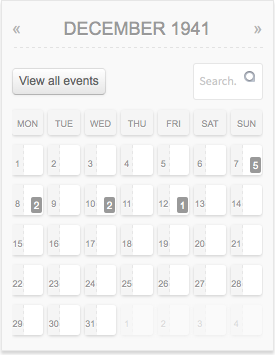The casualties suffered by a typical American infantry regiment serving in World War II were horrendous. For example, by the end of January, 1945, the 47th Infantry Regiment (which fought in France and Germany) had lost well over 100% of their strength to battle casualties, where men were either killed, wounded, missing, or taken as prisoner of war. Other units had similar grim statistics.
Fortunately for modern-day researchers, the Army kept meticulous combat diaries and journals to record their battlefield activities for a given period of time. At a minimum, these records, prepared daily, describe the daily actions of the unit (typically a Division or a Regiment), including intelligence information on the enemy forces faced, the geography of the area, weather conditions, and the success or failure of the day’s fighting. Some of these reports, known generally as “After Action Reports” (AAR), may describe the day’s combat in as little as a paragraph, or across several pages. Similar reports are also called unit journals or diaries.
It is impossible to know what will be in a given AAR. However, AARs for smaller units, such as Field Artillery Battalions, Combat Engineer Battalions, Armored units, or Military Police outfits, tend to provide more detail in connection with the individual service of their collective soldiers.
An example of the “closer look” we can get from Unit Records is the case of Captain George Oliver. While one report of his death disclosed that he was killed by a “concussion”, the AAR for his unit provided far more detail. It turned out that Captain Oliver was working with a group of men to gather the remains of some of the men in their outfit that had recently been killed. Unfortunately, the bodies were strewn about a German mine field. Captain Oliver was, in fact, killed by a concussion, but the actual cause of his injury was that he that he stepped on one of the mines.
As a professional researcher and World War II historian, Bill Beigel provides research services to genealogists, historians, authors, and civilians who are looking for information found in WW2 military unit records. Unit records are useful in piecing together stories about a unit or group, as well as about individuals who served in them. Bill Beigel researches veterans who served and survived the war, as well as those who were WW2 casualties.
Please select any of the units below to submit a research inquiry to WW2 Researcher Bill Beigel. If you do not see the name of the unit you are searching for, you may click on any unit and type the correct name into the form that follows.

















